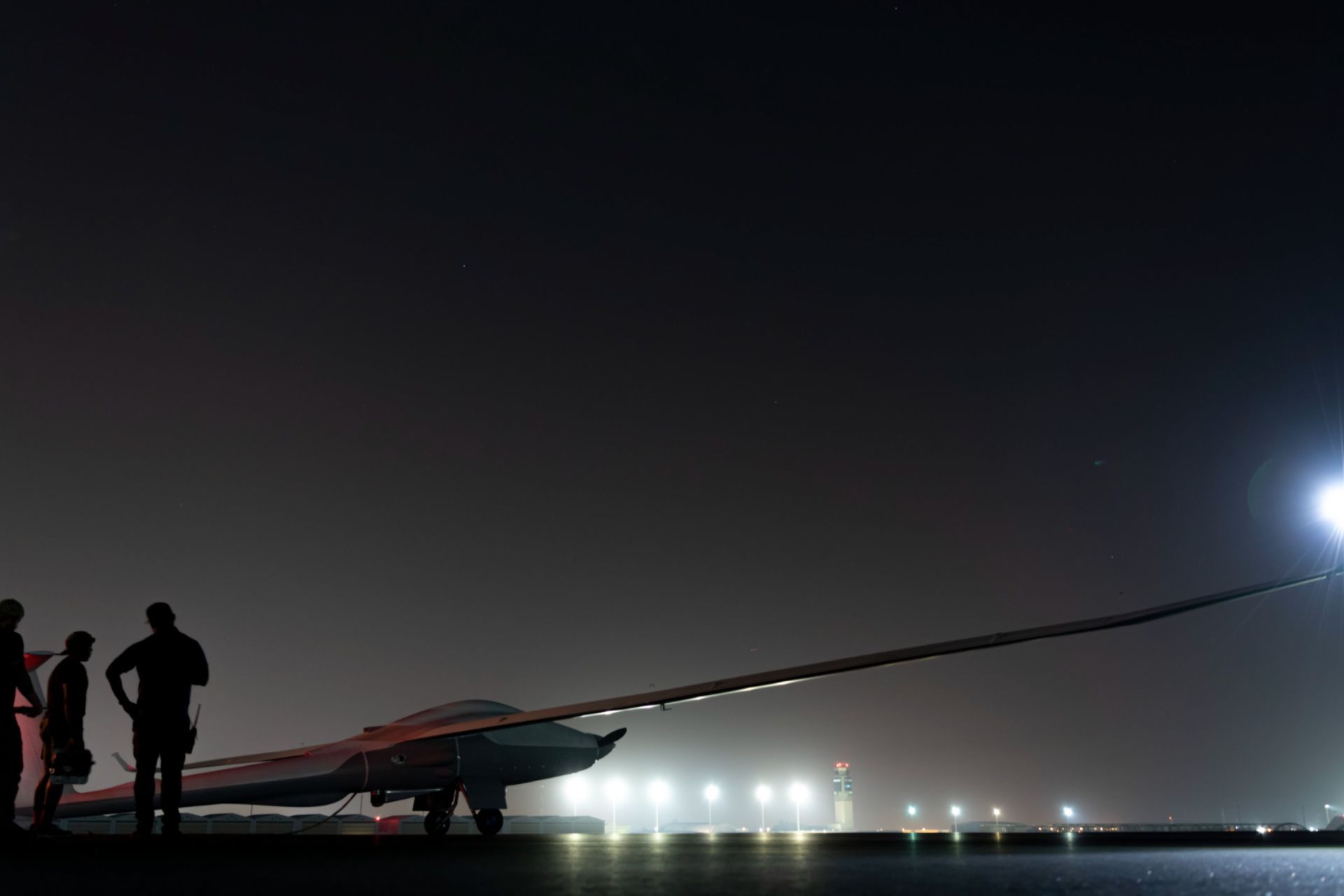Breaking News
Air Force's New ULTRA Reconnaissance Drone Flies for Three Consecutive Days.
The U.S. Air Force is on the verge of revolutionizing aerial surveillance with the ULTRA (Unmanned Long-endurance Tactical Reconnaissance Aircraft) drone, a innovant aircraft that has demonstrated an unprecedented ability to stay in flight for at least three consecutive days.This achievement, confirmed by recent tests conducted at the Dugway Proving Ground in Utah, represents a significant advancement in unmanned aerial vehicle (UAV) technology. Developed by DZYNE Technologies, the ULTRA, resembling a glider, boasts an impressive wingspan of over 24 meters (80 feet), enabling it to carry substantial payloads of 180 kilograms (400 pounds) over vast distances.
Follow Army Recognition on Google News at this link

ULTRA ISR drone during tests (Picture source: USAF)
Strategic Investment and Technological Innovation
The Air Force has recognized ULTRA's potential and allocated around $35 million for four of these advanced systems in its fiscal year 2025 budget. This investment underscores the military's confidence in the drone's capabilities to provide critical intelligence, surveillance, and reconnaissance (ISR) data.
The Unmanned Long-Endurance Tactical Reconnaissance Aircraft (ULTRA) is designed by the Air Force Research Laboratory's (AFRL) Center for Rapid Innovation (CRI) and developed in collaboration with DZYNE Technologies Incorporated (DZYNE). ULTRA offers combat commanders complete global operational access in a cost-effective, GPS-hardened, ultra-long-endurance ISR platform. The ULTRA has an endurance capability that exceeds 80 hours while carrying over 400 pounds of payload. The ULTRA system is truly unique in its ability to overcome the tyranny of distance that hampers the operational use of current unmanned platforms at the excessive ranges required in operational areas such as the Pacific.
ULTRA is designed to be an ISR platform capable of carrying a variety of electro-optical/infrared (EO/IR), radiofrequency (RF), and other low-cost intelligence collection payloads and sensors to provide the user with a reconfigurable mission platform. Exceptionally long endurance allows these ISR sensors to provide unblinking coverage of areas of interest with fewer aircraft. Additionally, ULTRA is a cost-effective option when multiple aircraft systems need to be purchased to cover larger areas of interest.

US Air Force crew preps an ULTRA drone for taxi before takeoff, May 7, 2024 ( Picture source : USAF)
Importance of Such a Long Flight Duration
The tyranny of distance in relevant operational areas places unique requirements on ISR aircraft to be effective. Furthermore, some areas have limited basing options, requiring manned or unmanned aircraft to travel long distances to reach operational zones, which limits the time spent on-site. ULTRA will enable the USAF not only to economically purchase large quantities of aircraft systems but also to provide an efficient aircraft at these excessive distances.
How Does It Work?
ULTRA employs a novel approach to achieve long-term endurance and low acquisition cost by repurposing a previously manned commercial sport glider and converting it into a military-grade unmanned aerial vehicle. COTS (Commercial-off-the-shelf) drone technology, existing manufacturing and supply channels, and limited custom avionics are used to ensure that acquisition and maintenance costs remain low. The integration of low-cost EO/IR and RF sensors is made possible by lower operating altitudes, which do not require large optics or high-power RF systems to maintain efficiency.
ULTRA relies on a user-friendly command and control system that allows for point-and-click operations. Global operations are possible through satellite command and control links, which also provide operators with a real-time, high-rate ISR data stream.
The ULTRA drone has already been deployed in operational environments, including the Middle East, where it provides valuable ISR support in regions with limited basing options. Its ability to operate continuously for days allows the U.S. Air Force to maintain persistent surveillance in critical areas without the need for large fleets of drones.

Picture of ULTRA on runway preparing for takeoff. Current upgrades will push the endurance to potentially greater than 80hrs depending on payload. ( Picture Source : AFRL)


























